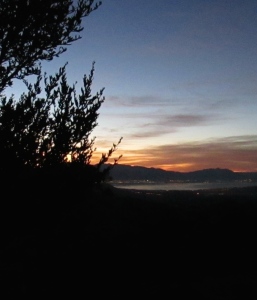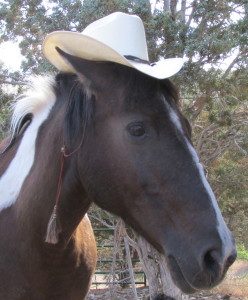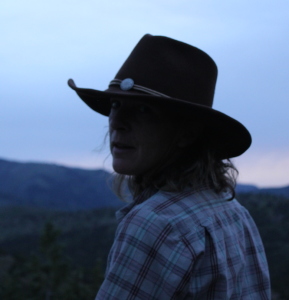“Listen to your horse.”
“Trust your horse.”
They sound earnest and profound, but what do those statements really mean?
And how can you listen to your horse and still be the Lead Horse? (Trainers tell you that, too.)
Finding the intersection between telling and listening, between leading and cooperating is a key component of horsemanship and a big part of what many call Feel.
I got a good lesson in this dynamic on two recent occasions with my horse, Pep.
1. We headed out after dark on a four-mile ride through the rough country of the Oquirrh foothills. Here, the trails are rocky and the landscape is full of juniper and scrub oak. Generally speaking, it’s open country. But on this ride, we stuck to tight, winding trails in the draw of a canyon.
The stars shined on this moonless night. I saddled up relying mostly on my sense of touch:
- brushing her back and running my hands under her belly to check for burrs and whatnot.
- threading the latigo through the cinch and snugging it slowly.
- undoing her halter and bringing the bosal past her nose and the bosal hanger over her ears.
Without light, the routine of tacking up felt almost romantic. It was like getting dressed in the dark and sneaking out of your parents’ house without turning on any lights. Read more about night vision here.
We headed out with the dog, Kip. We all know the trails well, but it became quickly apparent that tonight, Pep knew them best. She chose routes that gave her the best footing and the easiest going. At various spots, she moved easily into a trot and then back to a walk as the trail got dicey-er.
I saw shapes and splotches of rocks, shrubs, and trees as we passed by. With my hands, seat, and legs, I remained balanced and supportive of anything she wanted to do (except turning around).
It seemed we all relied somewhat on memories, especially when approaching a meadow we call the “Meeting Place” where we often take a break, hand out treats, and let the horses graze. Indeed, both horse and dog paused without being asked and I dutifully broke open a granola bar for us to share.
Read more about place cells and cognitive maps in the brain here.
We turned and headed home. So far, I’d touched the reins just a few times to get away from overhanging tree branches.
 Some say Zen moments happen when you set logic aside. Here, logic might require taking charge and being in control. It might insist on using a headlamp or flashlight. Instead, I trusted Pep and her better senses. I took stock of our connection, established through a few years of patiently learning one another’s cues. Letting go was liberating. Learning that our connection succeeded where domination would have failed was exhilarating.
Some say Zen moments happen when you set logic aside. Here, logic might require taking charge and being in control. It might insist on using a headlamp or flashlight. Instead, I trusted Pep and her better senses. I took stock of our connection, established through a few years of patiently learning one another’s cues. Letting go was liberating. Learning that our connection succeeded where domination would have failed was exhilarating.
2. My next lesson in listening and trusting was much more humbling:
Pep and I were doing some fine-tuning in a friend’s round pen: sidepassing, gate opening, transitions, etc.
I asked her to lope. The usually go-ey girl hesitated. I asked her again. She seemed to say, ‘I really don’t think it’s a good idea.’ But with the third request, she obliged. We made it halfway around before she slipped on the grassy dirt surface. We slid sideways, hit the ground, and landed on our sides and faces.
I got up, shook out the cobwebs, and looked at Pep, who’d popped back up, too. “Sorry, girl, for not listening. That was my fault.”

